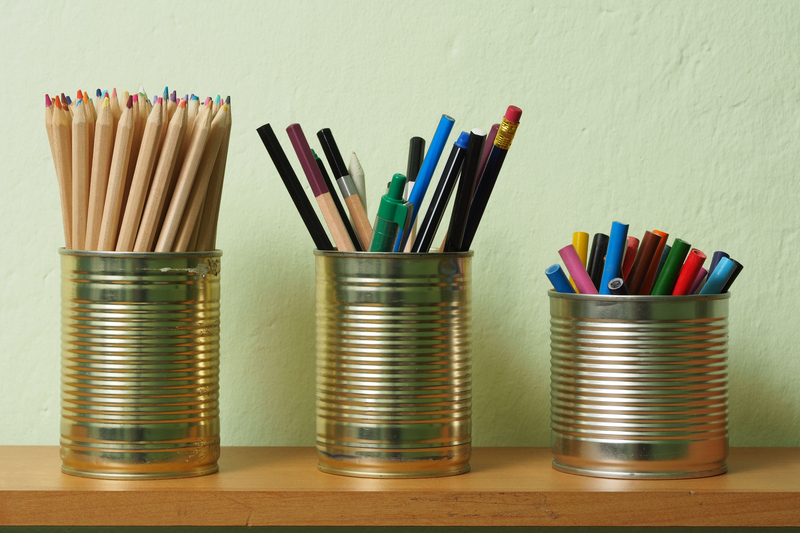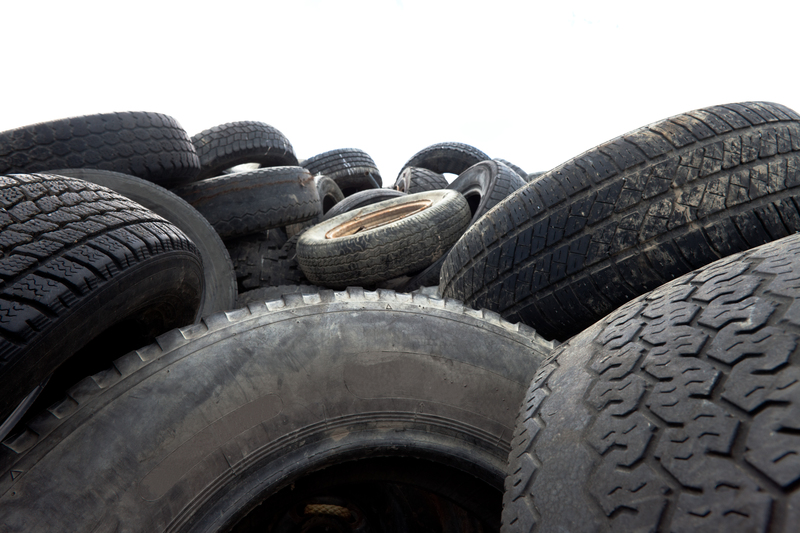Innovative Packaging Solutions and Cardboard Recycling: Shaping a Greener Future
The packaging industry is undergoing a massive transformation driven by sustainability concerns, technological advancements, and changing consumer preferences. Innovative packaging solutions and effective cardboard recycling practices have emerged as cornerstones for businesses aiming to reduce their environmental impact while offering durable, appealing, and cost-effective packaging. This comprehensive guide explores the latest trends, benefits, and best practices associated with sustainable packaging and recycling cardboard, providing valuable insights for brands, manufacturers, and eco-conscious consumers.

The Need for Innovative Packaging Solutions
In recent years, environmental awareness has reached new heights. Businesses and consumers alike are demanding packaging that not only protects products but also minimizes ecological damage. Innovative packaging solutions are essential for several reasons:
- Sustainability: Reducing reliance on non-renewable materials and minimizing waste.
- Brand Differentiation: Unique, eco-friendly packaging helps brands stand out in a crowded market.
- Product Safety: Advanced materials and designs improve protection during shipping and storage.
- Consumer Convenience: Easy-to-use, reusable, or biodegradable packaging enhances user experience.
- Compliance: Meeting increasingly stringent regulations related to packaging waste and pollution.
Thus, the drive for innovative packaging solutions is motivated by a blend of environmental responsibility, consumer demand, and regulatory pressures.
Emerging Trends in Sustainable Packaging
The pace of change in the packaging industry is remarkable, with sustainability at its core. Here are the key trends shaping the future:
1. Biodegradable and Compostable Packaging
Brands are increasingly adopting materials that naturally break down after disposal, such as cornstarch, mushroom-based packaging, and plant fibers. These solutions minimize landfill contributions and support a circular economy.
2. Smart Packaging Technologies
Smart packaging incorporates features like QR codes, RFID tags, and temperature sensors. These not only enhance product tracking and safety but also provide consumers with information about recycling and reusability.
3. Minimalist and Lightweight Designs
Reducing packaging material lowers shipping costs and carbon footprint. Many companies are turning to minimalist, lightweight designs that use fewer resources without compromising product integrity.
4. Recyclable and Recycled Materials
The use of recycled cardboard, paper, and plastics has soared as businesses strive to close the loop. Packaging made from recycled content appeals to eco-conscious consumers and conserves natural resources.
5. Reusable Packaging Solutions
From refillable containers to returnable shipping boxes, reusable packaging is gaining ground as a sustainable alternative. These solutions promote a culture of reuse while reducing waste and resource consumption.
The Vital Role of Cardboard in Eco-Friendly Packaging
Among all packaging materials, cardboard stands out for its versatility, strength, and recyclability. Cardboard packaging plays a pivotal role in logistics, e-commerce, food delivery, and retail. Its environmental benefits include:
- Renewable resource: Made primarily from wood pulp, a renewable source when managed responsibly.
- Recyclable: Cardboard can be recycled multiple times, reducing the demand for virgin resources.
- Biodegradable: Unlike plastics, cardboard breaks down naturally, posing less risk to wildlife & ecosystems.
- Energy efficient: Recycling cardboard uses less energy than producing new material from scratch.
Cardboard packaging solutions encompass corrugated boxes, cartons, inserts, tubes, and trays--each customizable for various industries. Their adaptability, coupled with eco-friendliness, makes cardboard a cornerstone of sustainable packaging innovation.
Innovative Cardboard Packaging Ideas
Creativity continues to drive new applications for cardboard. Standout examples include:
- Modular Shipping Boxes: Customizable boxes that adjust in size for better product fit, reducing the need for fillers and decreasing shipping costs.
- Cardboard Furniture: Durable, lightweight furniture made entirely from recycled cardboard--ideal for trade shows and pop-up stores.
- Protective Inserts: Engineered cardboard inserts replace plastic foam, offering the same protective qualities with improved eco-friendliness.
- Interactive Packaging: Boxes designed for reuse as toys, storage, or creative projects encourage consumer engagement and minimize single-use waste.
These innovative packaging solutions demonstrate how cardboard can go beyond traditional roles, contributing to both sustainability and customer experience.
Cardboard Recycling: Closing the Loop
Recycling is integral to the lifecycle of cardboard and the broader push for sustainable packaging. Cardboard recycling refers to the process of collecting, processing, and re-manufacturing used cardboard into new products. The benefits include:
- Resource conservation: Recycling a ton of cardboard saves approximately 17 trees and 7,000 gallons of water.
- Energy savings: Producing recycled cardboard uses up to 75% less energy compared to making new cardboard.
- Waste reduction: Recycling diverts cardboard from landfills, reducing methane emissions and landfill space usage.
The Cardboard Recycling Process
The process of recycling cardboard is an intricate yet efficient cycle:
- Collection: Used cardboard is gathered from consumers, businesses, and waste facilities.
- Sorting: Cardboard is separated from other paper and packaging materials.
- Shredding & Pulping: Sorted cardboard is shredded and mixed with water to create pulp.
- Filtering: Pulp is filtered to remove impurities such as tape, labels, and staples.
- De-inking & Bleaching: If needed, further cleaning and whitening are applied.
- Rolling & Drying: The cleaned pulp is rolled into sheets and dried, forming new cardboard ready for use.
Innovations in Cardboard Recycling
Modern recycling technologies are making the process faster, more efficient, and capable of handling contaminants that previously rendered cardboard non-recyclable. Artificial intelligence (AI) and automated sorting systems now identify and separate materials with high precision, increasing recycling rates and quality.
How Businesses Can Embrace Innovative Packaging and Cardboard Recycling
Adopting innovative packaging strategies and bolstering cardboard recycling yields environmental, economic, and reputational gains for brands. Steps businesses can take include:
1. Sustainable Sourcing
Prioritize certified sustainable cardboard suppliers (e.g., FSC-certified) and incorporate recycled materials wherever possible.
2. Packaging Design Optimization
Employ design principles that minimize waste, such as modular or multi-use packaging, right-sizing for products, and reducing unnecessary layers.
3. Consumer Education
Inform consumers on how to recycle or reuse packaging effectively by including labels, instructions, and links to recycling resources.
4. Waste Management Partnerships
Collaborate with recycling facilities to ensure a closed-loop system and explore take-back programs for used packaging.
5. Innovation Investment
Invest in research and development to pilot new materials, smarter packaging, and advanced recycling technologies.
The Future of Packaging: A Circular Economy Approach
The ultimate goal of innovative packaging and recycling initiatives is to create a circular economy, where resources remain in use for as long as possible, and waste is minimized. Cardboard packaging exemplifies this approach--it's made from renewable resources, is widely recycled, and can be engineered for multiple lifecycles.
Key Drivers of the Circular Economy in Packaging
- Eco-design: Focusing on packaging that is easily recyclable, compostable, or reusable from the outset.
- Extended Producer Responsibility (EPR): Holding manufacturers accountable for the packaging lifecycle, including post-use collection and recycling.
- Consumer Engagement: Incentivizing recycling and responsible disposal practices among users.
- Technology Integration: Leveraging smart materials, tracking, and automation to manage packaging lifecycles more efficiently.
An estimated 80% of environmental impacts are determined at the design phase. Investing in innovative packaging solutions and cardboard recycling is both an environmental imperative and a strategic move, preparing brands for future regulatory changes and shifting consumer expectations.

Cardboard Recycling at Home: Tips for Consumers
While corporations play a vital role, individual actions also matter. Here's how homeowners can effectively support cardboard recycling:
- Flatten boxes: Save space and make transportation easier by breaking down all boxes before disposal.
- Keep dry and clean: Avoid contaminating cardboard with food or liquid. Dirty cardboard (e.g., pizza boxes) can spoil entire recycling batches.
- Remove non-paper elements: Detach plastic, Styrofoam, or metal attachments before recycling.
- Use local recycling bins: Learn about your community's recycling rules to ensure correct sorting and disposal.
- Consider reusing: Before discarding, see if boxes can serve for storage, crafts, or gifts.
With proper handling, residential cardboard recycling maximizes environmental benefits and supports the sustainable packaging revolution.
Conclusion: Embracing a Greener Packaging Revolution
The synergy between innovative packaging solutions and cardboard recycling is reshaping the way goods are shipped, consumed, and disposed of. Brands that adopt sustainable materials, smarter designs, and closed-loop recycling processes not only reduce their ecological footprint but also build lasting value and customer loyalty.
With growing environmental awareness and technological progress, embracing sustainable packaging is no longer an option--it's a necessity. Whether through adopting sustainable cardboard packaging, encouraging cardboard recycling, or investing in innovative packaging technologies, the time for action is now. Together, businesses and consumers can drive the packaging industry toward a circular, resilient, and green future.
Start your journey by choosing eco-friendly packaging and participating in cardboard recycling today, and become part of the global movement for a cleaner, more sustainable world.